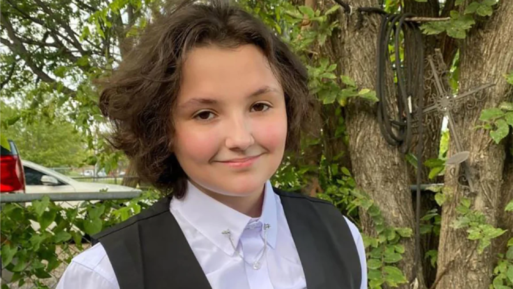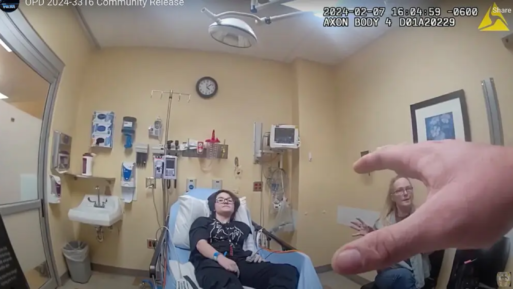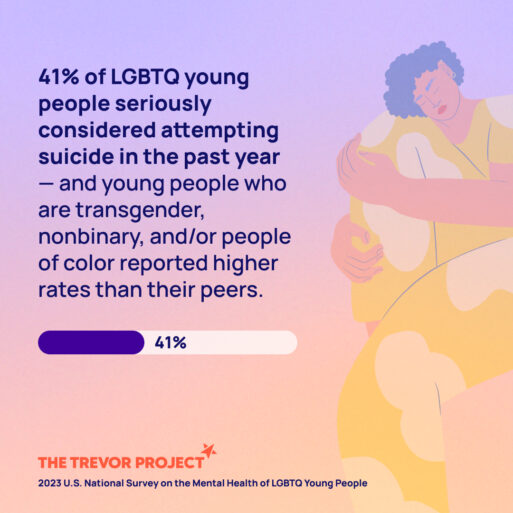
Nex Benedict
Credit: Kasandra Phelps via GoFundMe
Nex Benedict, a 16-year-old nonbinary Indigenous student from Owasso, Oklahoma, died on February 8th, 2024, just a day after they were assaulted in a school bathroom. Although the medical examiner’s preliminary report found that their death was likely the result of a lethal combination of two medications and not the injuries sustained in the attack, questions remain about the accuracy of the initial incident report.
What We Know About Events Leading up to Benedict’s Death
Benedict was gender-fluid – meaning they saw themselves as neither male nor female. “Nex saw themselves right down the middle,” their grandmother Sue Benedict said. Although Benedict’s gender fluidity wasn’t an issue at home, it had been a problem at school for about a year, ever since Oklahoma governor Kevin Stitt signed a bill in 2022 that required public school students to use bathrooms that matched the sex listed on their birth certificates. Soon after, in 2023, Stitt also passed a ban on gender-affirming care for trans youth in the state.
In Owassa Police body camera video footage from February 7th (the same day as the altercation), Benedict told officers their account of the event. They went to the bathroom “and I was talking with my friends, they were talking with their friends and we were laughing. And they had said something like, ‘Why do they laugh like that?’ And they were talking about us in front of us.”
In response to those comments, Benedict told the officer that they poured water from their water bottle on the students, and that’s when things escalated. The other students grabbed at Benedict’s hair, and then Benedict was able to grab one of the other girls and threw her into a paper towel dispenser. Benedict eventually got thrown to the ground and the other students proceeded to beat them up, Benedict attests in the video.

Image taken from body camera video provided by the Owasso Police Department shows Nex Benedict, left, and Sue Benedict, their grandmother, at a hospital.
Credit: Owasso Police Department, via The Associated Press
After being seen by the school nurse – who determined that ambulance service was not required following the attack – Benedict was taken to the hospital by their grandmother for treatment for injuries sustained in the fight, which included a broken blood vessel in the eye and various bruises, cuts and abrasions to the head, face, torso and limbs. While there, Benedict’s grandmother also requested a visit from an Owasso Police officer, whose body cam footage provides the aforementioned testimony. This footage also shows the officer discouraging Benedict and his grandmother from filing a report, because Benedict’s actions – pouring water on the other girls – could potentially be interpreted as assault. The officer added that it would be a shame for any of the students to have to deal with a criminal situation for “something so miniscule,” though Benedict disclosed that they had experienced bullying for a full year prior to this event.
The next day, Benedict collapsed at home and was rushed back to the hospital, where they were pronounced dead.
According to ABC News, an autopsy by the Office of the Chief Medical Examiner in Tulsa concluded that Benedict had died by suicide, the result of a toxic combination of diphenhydramine (an antihistamine commonly used for allergies), and fluoxetine, a drug often used to treat depression.
The Controversies Involved
As of the writing of this article, there are still many questions surrounding Benedict’s death and whether the discrimination they suffered was handled appropriately.
Injury Reports
On March 14, their family released a statement calling for closer attention to be paid to the full autopsy report, rather than the initial findings already publicly available, to ensure “other pertinent portions of the report are not overshadowed by the ‘classification’ of Nex’s death [as a suicide],” according to an updated article by CNN. The Benedicts’ claim their child’s injuries are being diminished deliberately in order to downplay the severity of the assault.
School Responsibilities
The U.S. Department of Education is also opening an investigation into whether the school district “failed to appropriately respond to alleged harassment,” according to a letter from the department. In a telling response, Oklahoma’s superintendent for public schools, Ryan Walters, insists that nonbinary or transgender people don’t exist. “You always treat individuals with dignity or respect, because they’re made in God’s image,” he said in a statement to The Times, “but that doesn’t change truth.”
Unfortunately, the Owassa school district in particular has a history of repressing LGBTQ+ advocacy. In April of 2022, Owasso High School teacher Tyler Wrynn was surreptitiously filmed telling students, “If your parents don’t accept you for who you are, f*** them.” This video went viral thanks to the far-right social media influencer account Libs of TikTok, run by Chaya Raichik. Subsequently, Wrynn – an admired teacher who taught Benedict – was ultimately forced to resign.
This is not the only time Ms. Raichik’s “Libs of TikTok” has caused trouble for Oklahoma school districts. Last August, one of her edited videos of a public school librarian in Tulsa led to several consecutive days of bomb threats to schools in the district. Her anti-LGBTQ+ posts have been linked to nearly three dozen threats made towards schools, libraries, hospitals, and businesses across 16 states, according to a recent NBC News investigation. And, just the month before Benedict’s death, Raichik was appointed to the Oklahoma Department of Education’s Library Media Advisory Committee by Superintendent Ryan Walters.
For Those Who are LGBTQ+, Risk of Suicide is Elevated
Bullying and teen suicide isn’t limited to nonbinary kids, but the rate of suicide for transgender youth is disproportionately high compared to their cisgender counterparts. Transgender people of color face an even higher rate of suicide risk. As an Indigenous nonbinary person – the Benedict family traces part of their roots to the Choctaw Nation – Benedict fell into the latter category.

Credit: The Trevor Project
In a 2023 national survey on LGBTQ+ youth mental health conducted by The Trevor Project, Native/Indigenous LGBTQ+ youth consistently reported the highest suicide risk among racial and ethnic groups, with nearly one in four Indigenous LGBTQ+ youth reporting attempts on their own lives.
Oklahoma’s state population is 13.1% Indigenous, according to the U.S. Census Bureau. The increasing amount of restrictive legislation against LGTBQ+ people in the state combined with the Trevor Project statistics should be raising national levels of concern. In a statement released by the White House in the days after Benedict’s death, President Biden said, “Every young person deserves to have the fundamental right and freedom to be who they are, and feel safe and supported at school and in their communities. [Benedict], a kid who just wanted to be accepted, should still be here with us today.”
If you are in the U.S .and you or a loved one have contemplated suicide, call the National Suicide and Crisis Lifeline at 988 or 1-800-273-TALK (8255) to connect with a trained counselor. Outside the U.S., a worldwide directory of resources and international hotlines is provided by the International Association for Suicide Prevention, or you can turn to Befrienders Worldwide.

 The Tragic Death of Nex Benedict
The Tragic Death of Nex Benedict


 Our Annual Seven Holiday Gifts for Someone Who Is Grieving, 2024 Edition
Our Annual Seven Holiday Gifts for Someone Who Is Grieving, 2024 Edition
 “Making Mobiles” by Karolina Merska
“Making Mobiles” by Karolina Merska
 “Hands Up to the Sky” by Michael Franti & Spearhead
“Hands Up to the Sky” by Michael Franti & Spearhead














